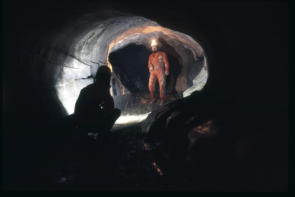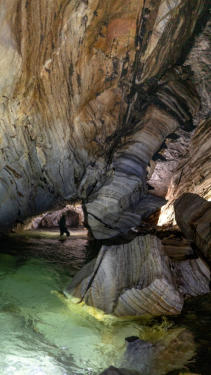


© 2025 SpeleoCanada
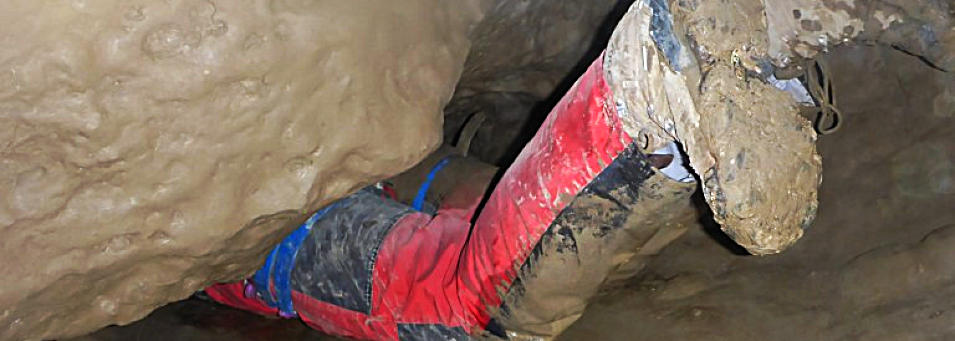

How Do I Get Into Caving?
1. Generally we suggest that if you’ve never been caving
before, you may wish to start out with a guided ‘wild
cave’ tour offered by a commercial operator, such as
Horne Lake or Cody Caves in BC, or Canmore Cave Tours
in Alberta, or the tour of Trou du Diable of Saint-Casimir
in Quebec.
Alternatively, you can accompany experienced cavers,
preferably ones who are affiliated with one of the
provincial caving clubs, most of which hold events every
year at which novices are welcome. If you enjoy the
experience, go to step 2. If not, you will still have a nice
adventure tale to tell.
2. Joining an organized caving club or society is your
next logical step. Although they are not formal training
or certification agencies, they can provide progressive
orientation or training experiences and opportunities
for mentorship from experienced trip leaders. You will
be able to make contacts with other cavers and become
aware of self-organized trips among members, in
addition to the "club" events. Getting mentoring from
advanced cavers and gaining experience on actual trips
is a terrific way to gradually build your skills and
confidence. You will learn that caving has its own
subculture, jargon, body of literature, and norms /
expectations regarding cave conservation, naming
conventions, responsible exploration, and of course
safety. Most provincial caving societies will have a Code
of Conduct for you to sign which will embody these
principles.
3. If you want to get very far into caving in more
advanced environments, particularly in the Alberta/BC
Rockies where the caves tend to have a significant
vertical component, you are definitely going to want to
learn Single Rope Technique (SRT) and acquire the
necessary gear -- some of which is deliberately different
from standard climbing gear. Please note that while
prior experience in rappelling, rock or ice-climbing etc.
is certainly helpful, you will need to learn some
specialized techniques to handle vertical caving safely
and efficiently.
4. Take on a variety of progressive challenges with
cavers who have skills, experience and goals with which
you are comfortable. You can branch out in many ways,
from continued “tourist caving” to serious expedition
caving, take courses or attend events with the US
National Speleological Society, or become involved in a
Cave Rescue organization, for example.

Speleo Canada
Ken Smith - Alberta
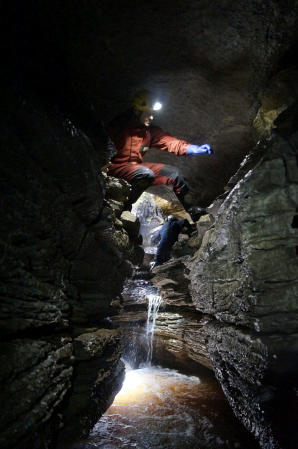
Cath Clouzard - Quebec
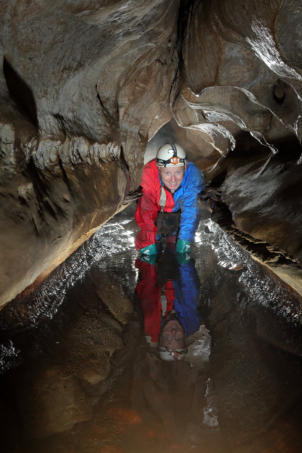
Marcus Buck - Ontario



© SpeleoCanada 2024

How Do I Get Into
Caving?
1. Generally we suggest that if you’ve never
been caving before, you may wish to start
out with a guided ‘wild cave’ tour offered by
a commercial operator, such as Horne Lake
or Cody Caves in BC, or Canmore Cave Tours
in Alberta, or the tour of Trou du Diable of
Saint-Casimir in Quebec.
Alternatively, you can accompany
experienced cavers, preferably ones who are
affiliated with one of the provincial caving
clubs, most of which hold events every year
at which novices are welcome. If you enjoy
the experience, go to step 2. If not, you will
still have a nice adventure tale to tell.
2. Joining an organized caving club or
society is your next logical step. Although
they are not formal training or certification
agencies, they can provide progressive
orientation or training experiences and
opportunities
for
mentorship
from
experienced
trip leaders.
You will be
able to make
contacts with
other cavers and become aware of self-
organized trips among members, in addition
to the "club" events. Getting mentoring from
advanced cavers and gaining experience on
actual trips is a terrific way to gradually build
your skills and confidence. You will learn that
caving has its own subculture, jargon, body
of literature, and norms / expectations
regarding cave conservation, naming
conventions, responsible exploration, and of
course safety. Most provincial caving
societies will have a Code of Conduct for you
to sign which will embody these principles.
3. If you want to get very far into caving in
more advanced environments, particularly in
the Alberta/BC Rockies where the caves tend
to have a significant
vertical component,
you are definitely
going to want to learn
Single Rope Technique
(SRT) and acquire the
necessary gear -- some
of which is deliberately
different from
standard climbing
gear. Please note that
while prior experience
in rappelling, rock or
ice-climbing etc. is
certainly helpful, you
will need to learn some
specialized techniques to handle vertical
caving safely and efficiently.
4. Take on a variety of progressive challenges
with cavers who have skills, experience and
goals with which you are comfortable. You
can branch out in many ways, from
continued “tourist caving” to serious
expedition caving, take courses or attend
events with the US National Speleological
Society, or become involved in a Cave Rescue
organization, for example.
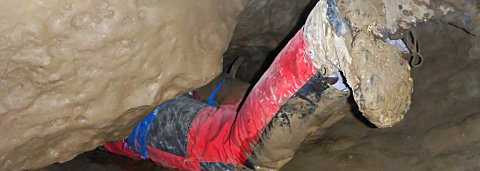

Speleo Canada
